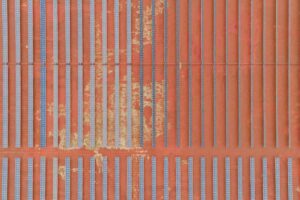Australia’s electricity retailers have won a major victory in the battle over who should be have access to the nation’s lucrative solar and battery storage market, with Wednesday’s publication of the Australian Energy Regulator’s Ring-fencing Guideline effectively ruling networks out of the game.

As we reported here in August, the turf war between the networks and the retailers is all about who should gain the right to the “behind the meter” consumer market, to meet the growing demand for technologies that enable households and businesses to better manage how they buy, store, generate and sell electricity.
The AER’s new and legally binding guideline – effective Thursday, but to be fully implemented by network distribution businesses by January 01, 2018 – requires distribution network service providers (DNSPs) to separate their regulated business activities, costs and revenues from other unregulated services, such as solar PV and battery installations.
Any unregulated services, the Guideline says, will need to be provided through a completely separate entity that offers its services in a competitive market.
The aim of the rule, says the AER, is to prevent network businesses from shifting costs into their regulated business or taking unfair advantage of their regulated position in the electricity market. It is also designed to encourage the development of competition in new products and services that the AER argues will give consumers better electricity choices.
This is in line with what many retailers have argued in their submissions to the AER on the guidelines.
For example, Red Energy and Lumo Energy – both subsidiaries of Snowy Hydro Limited – told the AER they “firmly believe” the framework for all contestable consumer services must be competitively neutral to allow for effective competition.
“Due to the infancy of this market it is important that the policy settings are such that competition is encouraged,” the two retailers’ submission said. “Red and Lumo …strongly support a policy position that excludes DNSPs from supplying contestable services (either directly or through a ring fenced business) from beyond the meter as it has the potential to distort competition in the market for these… services.”
Networks, however, are bound to disagree, just as they did back in August the regulation was flagged in the AER’s Draft Guildeline. They, and others in the industry, argue that keeping the networks out of the market will unnecessarily nobble the transition the energy market has to make.
“We just think that is a ludicrous position to be in,” said Rick Francis – the CEO Spark Infrastructure, which owns 49 per cent stakes in South Australian Power Network, the CitiPower and Powercor networks in Victoria, and recently bought a 15 per cent stake in Transgrid, the NSW-based high voltage network provider.
Francis was particularly angry about proposals that networks would have to duplicate all their services in a new company, right down to depots, and argued the rules would not be good for consumers, because they would mean higher costs.
“We would be strongly challenging those guidelines,” he said in August.
AGL Energy’s submission to the AER declares the gentailer to be “of the firm opinion that … customers’ interests are best served by competitive markets rather than regulation.
“A competitive market framework does not pick winners – whether they be particular technologies or particular service providers. Thiis why competitive neutrality and technology neutrality are foundational principles,” AGL said.
“In AGL’s view revised, nationally consistent distribution ring-fencing guidelines are required as a matter of some urgency. …Guidelines focussed solely on the separation of distribution and transmission activities from generation and electricity retail activities are now grossly inadequate.
“If a regulated monopoly (or affiliate) can operate in a contestable market using regulated funding, with lower financing costs and data gained through its position as a regulated monopoly, then it will have clear advantages over alternative service providers.
“Other advantages will arise if its association with the network monopoly allows it to realise value not available to competing providers or to benefit from the network’s role as gate-keeper of grid connections.”
The AER, meanwhile, says its decision was informed by around 80 written submissions, workshops and public forums, and a “large number of one-on-one discussions” with stakeholders.
“This binding Guideline fosters a competitive market, and will ultimately drive better consumer choices allowing customers to find the electricity offer that best suits their needs,” AER Chair Paula Conboy said.
“Electricity markets are becoming more dynamic and decentralised. Consumers are looking for new products and services to meet their energy needs.
“The Ring-fencing Guideline supports development of competitive markets, provides greater clarity and certainty in the market for new investment, and helps to accelerate innovation and efficient investment,” she said.










